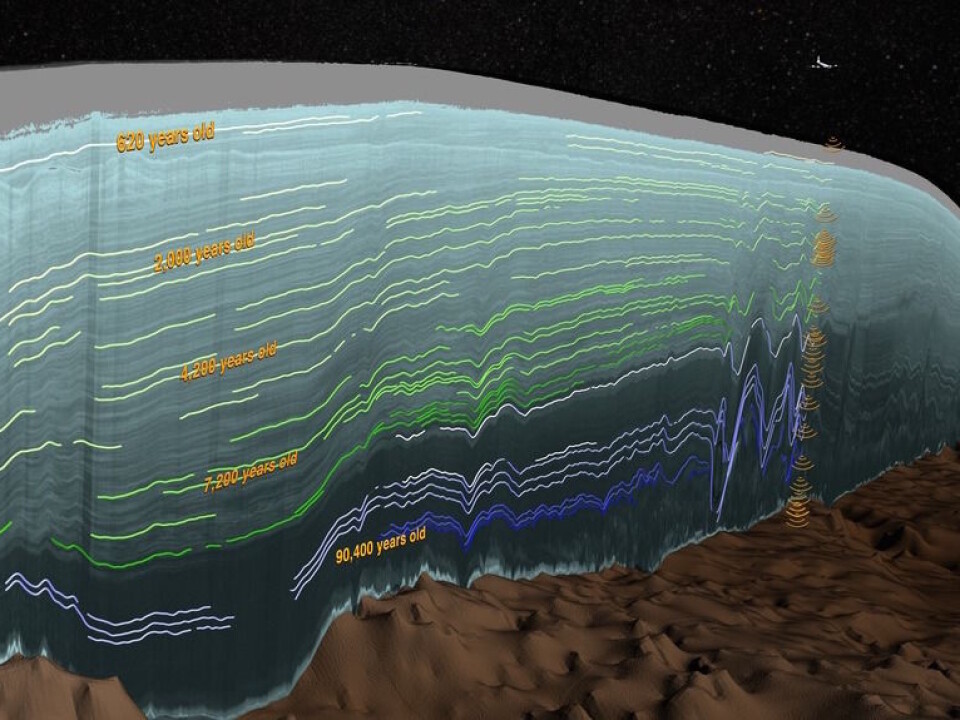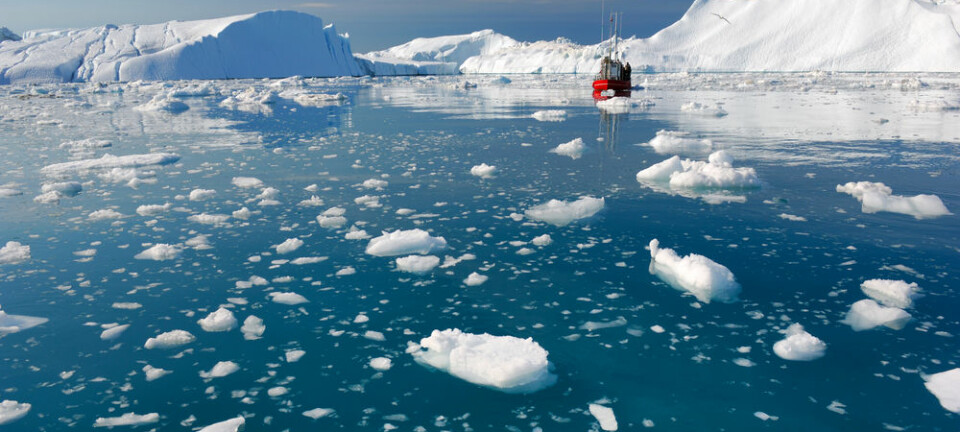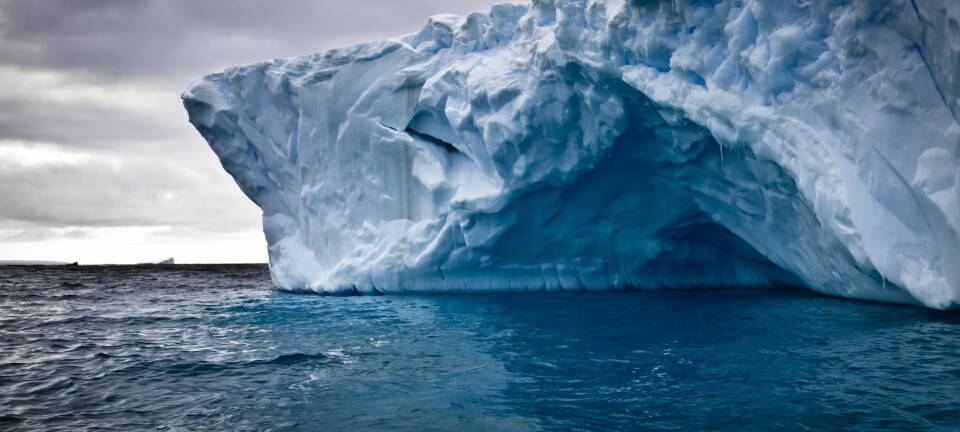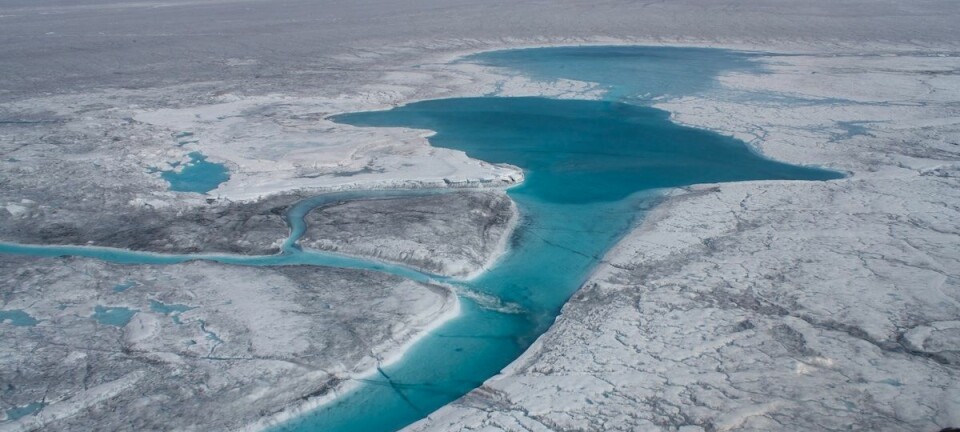
Deceleration of the Greenland ice sheet caused by 11,000-year-old events
Events that happened 11,000 years ago are still affecting the behaviour of the Greenland ice sheet today, causing it to decelerate.
Today large parts of the Greenland ice sheet move slower than they have in the past, due to a process that began around 11,000 years ago.
At this time, the type of snow accumulating over Greenland suddenly changed, and it is this change that causes the ice sheet to slow down.
“The ice sheet as a whole is still losing a tremendous amount of mass. But what we see here is the fingerprint of how the ice sheet is still responding to processes that were kick-started millennia ago, at the start of the last deglaciation,” says co-author William Colgan, a guest researcher at the Geological Survey of Denmark and Greenland (GEUS) and assistant professor in the Department of Earth and Space Science and Engineering at York University in Toronto, Canada.
The new research is published in the journal Science.
Clean ice moves more slowly

11,000 years ago, the Earth was undergoing huge climate changes. The massive ice sheets that once covered large parts of the globe had all but melted and sea levels were rising.
But as the world became warmer and wetter, it also became less dusty, and this change is reflected in the type of ice contained within the Greenland ice sheet.
“Ice deposited during the last glacial period was dustier and contained more air bubbles. This made it softer and more deformable than present day ice, which is cleaner and harder,” says Colgan.
This cleaner, harder ice started to form 11,000 years ago, and it is this ice that has since caused large parts of the ice sheet to slow down.
Greenland is growing and slowing down
As snow falls on the ice sheet, it accumulates in layers, which over time are compressed into ice. So the hard ice that started to form 11,000 years ago is now buried deep with the ice sheet.
But this ice doesn’t just move downwards, it also flows outwards towards the edges of the ice sheet.
In much the same way as a stiff bread dough holds its shape better than a soft dough, the young hard ice flows out to the sides of the ice sheet much more slowly than the older softer ice, causing the ice sheet to slow down.
“So when we talk about the deceleration of the ice sheet, what we’re talking about is this harder layer of modern ice that is making its way down through the ice sheet and slowly replacing the softer, older ice at the bottom,” says Christine Hvidberg, a glaciologist with the Neils Bohr Institute, Copenhagen, Denmark.
Hvidberg was not involved in the new research, but describes it as “an important result” that provides “a unique opportunity to see how the ice sheet dynamics have changed over time.”
How vulnerable is the ice sheet to melting?
So can this hard ice slow down the movement of the Greenland ice sheet enough to protect it from the rapid melting observed in recent years due to global warming?
According to Colgan the answer is no, but Hvidberg is more optimistic.
“Melt due to contemporary climate change is really concentrated around the edges of the ice sheet. Here the ice sheet is thinning and glaciers are flowing faster into the sea and we’re losing hundreds of gigatons of ice each year,” says Colgan.
“But the processes that we documented are in the interior of the ice sheet. It’s much more subtle and it in no way offsets that peripheral ice loss,” he says.
But Hvidberg thinks that the ice sheet as a whole is not as vulnerable to climate change as many computer models suggest.
“This [hardening] effect may help the ice sheet to be more resilient towards climate change,” says Hvidberg. “But of course it’s complicated.”
“At the same time [as the ice is becoming harder] temperatures are also increasing. So the ice is now warming up and this starts to make the ice softer again. So exactly how the ice sheet will evolve is complicated by many different processes,” she says.
But the real message, says Colgan, is that the ice sheet is more dynamic that we previously thought.
“This means that we really have to understand these subtle processes that have been happening over the last 11,000 years to fully understand what has happened in the last ten years to be able to accurately predict what will happen in the near future,” he says.
Scientific links
- Holocene deceleration of the Greenland Ice Sheet. DOI 10.1126/science.aab1702
- Ice sheet in peril (a review article by Christine Hvidberg)









